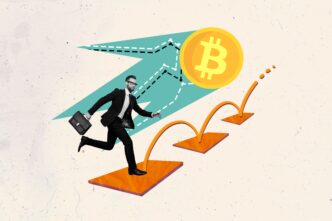In February, a significant rise in job applications from federal workers at agencies affected by the Department of Government Efficiency was observed on Indeed.com, with numbers reaching 75% above those recorded in 2022. This surge comes amid growing concerns over President Donald Trump’s economic policies, which are creating uncertainty in the business sector and, in turn, slowing hiring, particularly in specialized and white-collar jobs. Economist Allison Shrivastava from Indeed describes the current labor market as “a little bit frozen,” yet stable for the time being.
Labor Department figures released recently show that initial unemployment claims remain steady, with 224,000 claims filed last week, a slight decline from the previous week’s adjusted figure. Despite an increase in unemployment filings by federal employees, these numbers have not seen a consistent rise. Specifically, 821 federal workers filed claims under the Unemployment Compensation for Federal Employees program for the week ending March 15, a decrease from 1,066 the previous week.
This period of labor market data reveals “two separate worlds,” according to RSM US economist Joe Brusuelas. He notes that while businesses are managing their workforces cautiously due to ongoing labor supply constraints, federal government employment is seeing a different trend, with more individuals unemployed than the claims might suggest. These individuals are now actively seeking employment opportunities as a precautionary measure.
Indeed’s recent data underscores a notable increase in job searches by federal workers, with DOGE-related applications rising by 50% in February alone. This trend is not unusual following presidential inaugurations, but the scale of this increase is unprecedented, Shrivastava told CNN. She highlighted a surge in job searches with specific keywords such as “horticulture,” “employee relations,” and “policy analyst,” indicating a specialized group of job seekers.
In recent years, white-collar job availability has been affected by the pandemic. The initial surge in hiring within the technology, financial services, and consulting sectors driven by remote work needs and shifting consumer behaviors has now stabilized to pre-pandemic norms. Shrivastava points out that this recalibration, coupled with rising costs and technological advancements, has contributed to a decline in hiring across most white-collar industries.
Meanwhile, sectors like healthcare, leisure, hospitality, and state and local government have seen job gains, driven by factors such as an aging population and the return to in-person services post-pandemic. However, the pace of job growth has decelerated over the past year, aligned with the Federal Reserve’s inflation measures aimed at curbing demand.
Recent trends indicate that the labor market is experiencing less churn, with businesses slowing their hiring, and workers showing reluctance to quit their jobs. This has led to prolonged unemployment durations for job seekers. While some of this is attributed to election-year uncertainties and over-hiring corrections, the impact of high interest rates and inflation remains significant.
The initial post-election “Trump bump” in consumer and business sentiment has waned as economic uncertainties related to policy changes, such as tariffs and federal job cuts, have taken hold. Shrivastava warns that the labor market’s current “frozen” state, though stable, could have adverse effects if prolonged.
Your World Now
The current economic climate, marked by fluctuating hiring rates and federal job cuts, impacts various elements of daily life for ordinary individuals and communities. Federal workers facing employment uncertainty may lead to increased competition for jobs, potentially driving down wages in certain sectors as supply outpaces demand. This shift could alter the job market dynamics, affecting the availability of white-collar positions.
For local communities, reduced government spending due to personnel cuts may impact the availability of public services, leading to diminished quality of education, healthcare, and infrastructure maintenance. As federal workers transition to the private sector, local businesses may experience changes in consumer spending patterns, affecting their growth and sustainability. Additionally, uncertainty in hiring could influence individuals’ career planning and financial stability, prompting a cautious approach to investments and long-term financial commitments.





